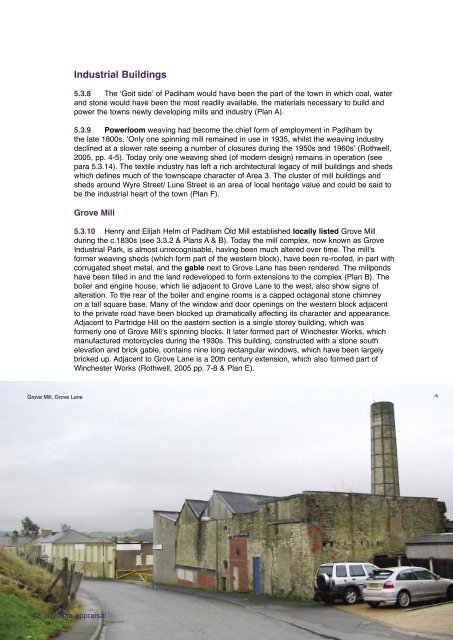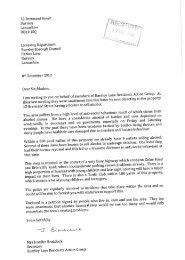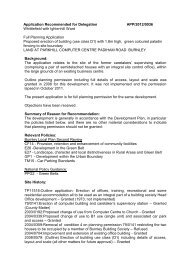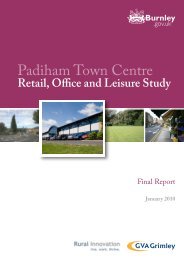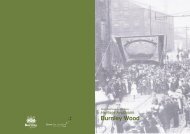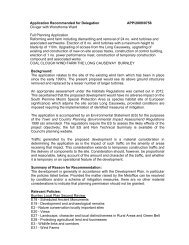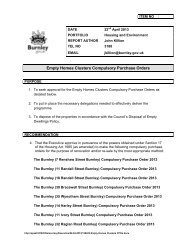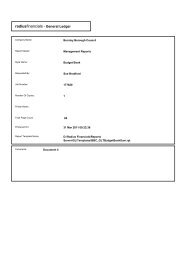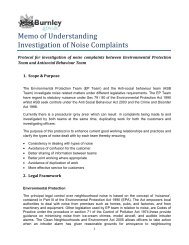The Padiham Heritage Appraisal - Burnley Borough Council
The Padiham Heritage Appraisal - Burnley Borough Council
The Padiham Heritage Appraisal - Burnley Borough Council
- No tags were found...
Create successful ePaper yourself
Turn your PDF publications into a flip-book with our unique Google optimized e-Paper software.
Industrial Buildings5.3.8 <strong>The</strong> ‘Goit side’ of <strong>Padiham</strong> would have been the part of the town in which coal, waterand stone would have been the most readily available, the materials necessary to build andpower the towns newly developing mills and industry (Plan A).5.3.9 Powerloom weaving had become the chief form of employment in <strong>Padiham</strong> bythe late 1800s. ‘Only one spinning mill remained in use in 1935, whilst the weaving industrydeclined at a slower rate seeing a number of closures during the 1950s and 1960s’ (Rothwell,2005, pp. 4-5). Today only one weaving shed (of modern design) remains in operation (seepara 5.3.14). <strong>The</strong> textile industry has left a rich architectural legacy of mill buildings and shedswhich defines much of the townscape character of Area 3. <strong>The</strong> cluster of mill buildings andsheds around Wyre Street/ Lune Street is an area of local heritage value and could be said tobe the industrial heart of the town (Plan F).Grove Mill5.3.10 Henry and Elijah Helm of <strong>Padiham</strong> Old Mill established locally listed Grove Millduring the c.1830s (see 3.3.2 & Plans A & B). Today the mill complex, now known as GroveIndustrial Park, is almost unrecognisable, having been much altered over time. <strong>The</strong> mill’sformer weaving sheds (which form part of the western block), have been re-roofed, in part withcorrugated sheet metal, and the gable next to Grove Lane has been rendered. <strong>The</strong> millpondshave been filled in and the land redeveloped to form extensions to the complex (Plan B). <strong>The</strong>boiler and engine house, which lie adjacent to Grove Lane to the west, also show signs ofalteration. To the rear of the boiler and engine rooms is a capped octagonal stone chimneyon a tall square base. Many of the window and door openings on the western block adjacentto the private road have been blocked up dramatically affecting its character and appearance.Adjacent to Partridge Hill on the eastern section is a single storey building, which wasformerly one of Grove Mill’s spinning blocks. It later formed part of Winchester Works, whichmanufactured motorcycles during the 1930s. This building, constructed with a stone southelevation and brick gable, contains nine long rectangular windows, which have been largelybricked up. Adjacent to Grove Lane is a 20th century extension, which also formed part ofWinchester Works (Rothwell, 2005 pp. 7-8 & Plan E).Grove Mill, Grove Lane42 heritage appraisal


